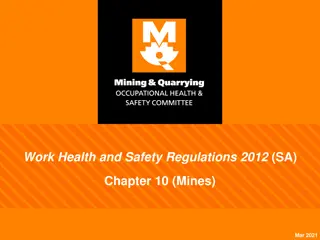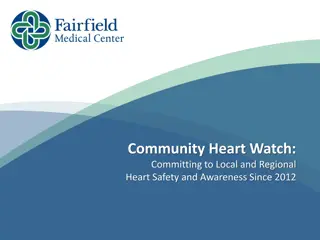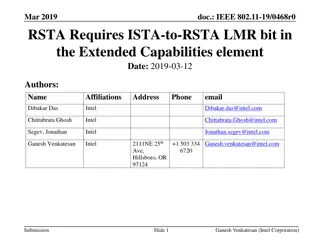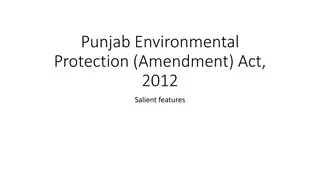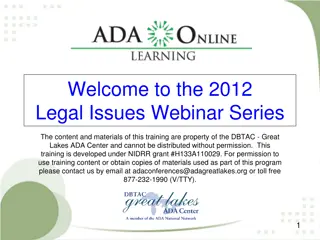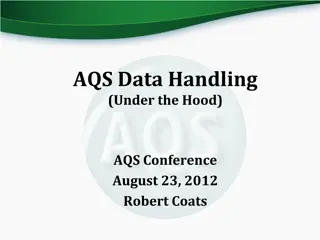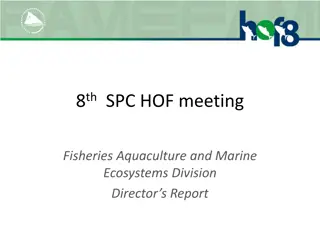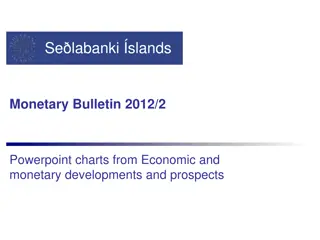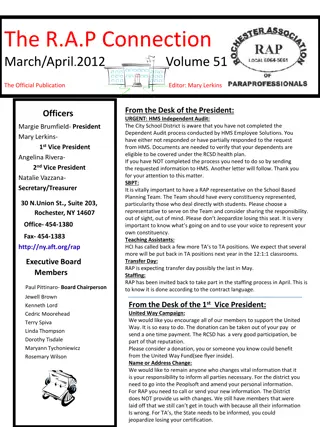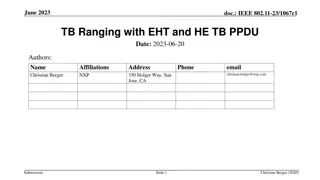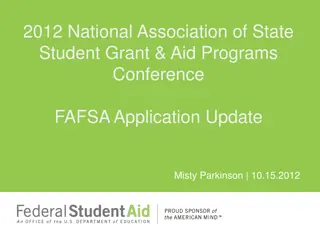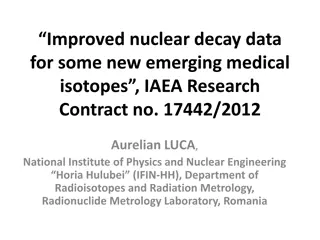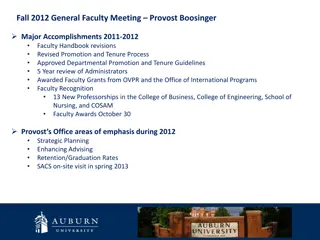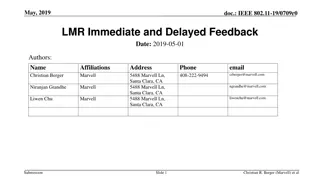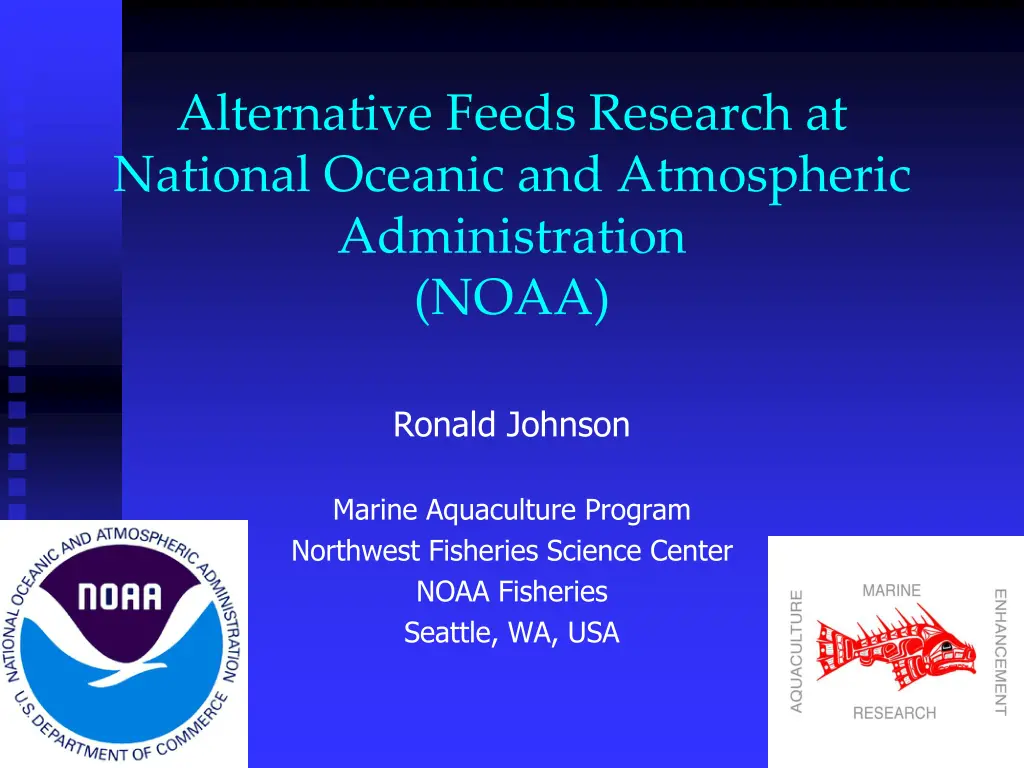
Sustainable Aquaculture Feeds - Research and Initiatives by NOAA
Explore the research and initiatives by NOAA focusing on alternative feeds for sustainable aquaculture. Learn about the rising demand for fishmeal, the NOAA/USDA Alternative Feeds Initiative goals, and the triple bottom line approach for healthy and sustainable aquaculture practices.
Download Presentation

Please find below an Image/Link to download the presentation.
The content on the website is provided AS IS for your information and personal use only. It may not be sold, licensed, or shared on other websites without obtaining consent from the author. If you encounter any issues during the download, it is possible that the publisher has removed the file from their server.
You are allowed to download the files provided on this website for personal or commercial use, subject to the condition that they are used lawfully. All files are the property of their respective owners.
The content on the website is provided AS IS for your information and personal use only. It may not be sold, licensed, or shared on other websites without obtaining consent from the author.
E N D
Presentation Transcript
Alternative Feeds Research at National Oceanic and Atmospheric Administration (NOAA) Ronald Johnson Marine Aquaculture Program Northwest Fisheries Science Center NOAA Fisheries Seattle, WA, USA
World Fisheries -Capture vs. Aquaculture
Rising demand for fishmeal World demand for seafood is increasing. Aquaculture can meet demand. Worldwide aquaculture use- 2008* Fish meal, 3.7 mmt, 61% of world supply Fish oil, 0.7 mmt, 74% of world supply *Source: Tacon A G J, Hasan M R, Metian M (2011) Demand and supply of feed ingredients for farmed fish and crustaceans: trends and prospects. FAO Fisheries and Aquaculture Technical Paper 564. Rome, FAO. 87pp.
NOAA/ USDA Alternative Feeds Initiative Goals Alternative feed ingredients cost effective maintain fish growth Maintain human health benefits Low environmental impact
Triple Bottom Line Approach Environment Economic Human Health Feeds for Healthy Sustainable Aquaculture
Change is already taking place Torrissen et. al. 2011
Plant proteins and oils -advantages Economic Low cost Biotechnology can keep costs down and improve nutrient composition Largest quantity of proteins and oils Environmental Low trophic level; primary producers Co-product provides use of waste material for another industry (e.g., starch) Sequesters CO2 on the earth Human health Phyto-chemicals
Plant proteins and oils -disadvantages Economical Nutritionally incomplete Highly unsaturated fatty acids (HUFAs) Amino acids and dipeptides Met, Lys, Tau Anti-nutritional factors High in carbohydrates Environmental Issues associated with increased agriculture Human Health Naturally low in n-3HUFAs
Byproducts of ethanol production - advantages Economic Low cost Use of carbohydrate fraction for ethanol production may increase availability of the protein and bring costs down Environmental Co-product provides use of waste material from another industry Sequesters CO2 Human health Phyto-chemicals
Byproducts of ethanol production - disadvantages Economical Nutritionally incomplete Quality of protein sometimes low due to ethanol production process Lipid competes with biodiesel Environmental Issues associated with increased agriculture Human health May have contamination loads from farming practices or processing for fuels Naturally low in n-3 HUFAs
Animal byproducts - advantages Economic Well utilized by a variety of fish species Meals are often similar to fishmeal in nutrient composition Increases revenue to animal processing Lower cost? Environmental Recycles animal processing wastes back to fish Human health May be a source of CLA
Animal byproducts - disadvantages Economical Public concerns over BSE have resulted in restrictions on use in feeds Environmental Issues associated with animal production Human health Some markets do not allow terrestrial animal proteins BSE issue is unclear Low in n-3 HUFAs and high in saturated fats
Fish byproducts -advantages Economic High palatability Easy to replace fish meal and oil with high quality meal Environmental Uses waste which is now discarded Reduces nutrient pollution Human health High in n-3 HUFAs and other nutrients
Fish byproducts -disadvantages Economical Expensive to capture fish Located in small quantities from diverse sources Highly perishable until dried Environmental No serious issues Human health May have the same contaminants as conventional fish meal and oil
Other potential alternatives Algae products Krill Insect products Single cell protein Marine invertebrates Invasive fish species
Northwest Fisheries Science Center Seattle, WA, USA
Fisheries byproduct research at NWFSC Whitefish meal Pollock bone meal Salmon processing Head meal Frame and trim meal
Northwest Fisheries Science Center Manchester, WA, USA
Going forward -Alternative feeds research at NWFSC Fishmeal replacement Fisheries byproducts meals Plant meals Taurine Pollock bone meal Fish oil replacement Viscera oils Specialty oils Finishing feeds Pacific salmon Pre-harvest feeds intervals




